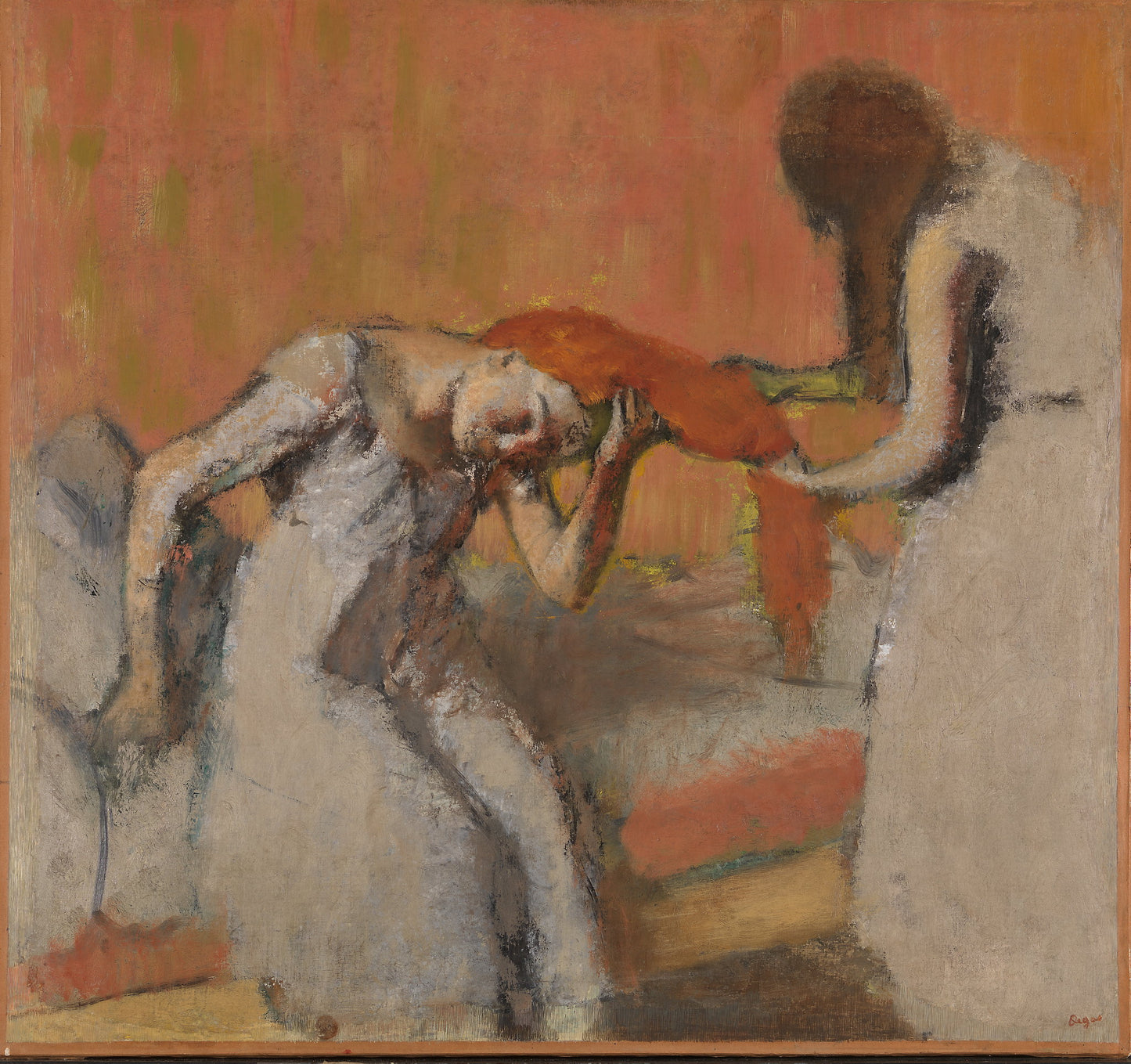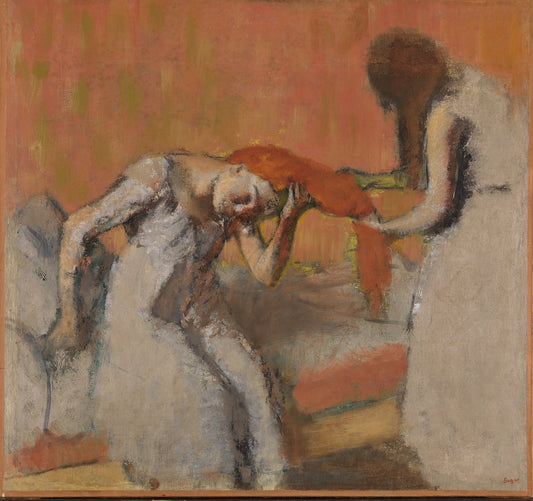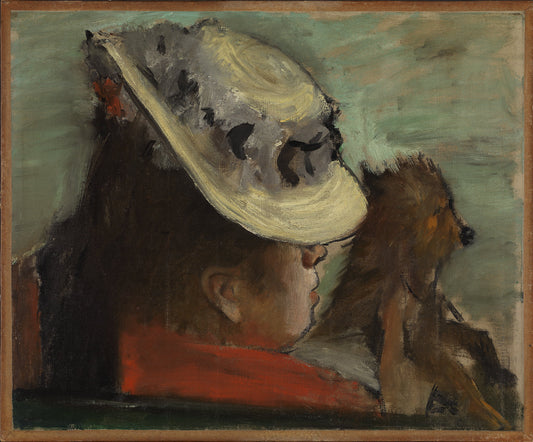Edgar Degas
Morning toilet
Morning toilet
Couldn't load pickup availability
High-quality reproductions from the National Museum's collection. Posters by DAIDDA are printed on Litho White Matt - 230 gram photo paper in premium quality. Artprints by DAIDDA provide outstanding colors, sharpness and durability in museum quality - printed on Moab Entrada Natural 300 gram cotton art paper. Printed on a matte surface with scratch-resistant pigment ink.
About the original: Date: 1890s
Other titles: La coiffure (FRA)
Morning Toilet (ENG)
Hair Dressing (ENG)
The Coiffure (ENG)
Designation: Painting
Material and technique: Oil on canvas
Technique: Oil
Material: Canvas
Dimensions: 82 x 87 cm
Subject: Visual arts
Classification: 532 - Visual arts
Motif type:
Genre
Figure study
Acquisition: Gift from the Friends of the National Gallery 1919
Inventory no.: NG.M.01292
Part of exhibition: The dance of life. The collection from antiquity to 1950, 2011 - 2019
Japanomania in the Nordic countries 1875 - 1918, 2016
Registration level: Single object
Owner and collection: The National Museum of Art, Architecture and Design, Visual Art Collections
Photo: Høstland, Børre
Shipping and returns
Shipping and returns
Shipping: We deliver to Scandinavia, the EU, the USA and several other countries. Please contact us if your country is not listed and we will try to arrange delivery.
Delivery time: 2-5 days within Norway, 7 days in Europe, 14 days globally.
Packaging: Our products are made to order and sent rolled in environmentally friendly packaging.
Customs Fees: International orders may be subject to customs fees, which are not included in shipping costs.
Return policy: You can return images within 14 days. See our returns page for more information.
Secure Payment: We never store your payment details. See our privacy policy for details.

See all works
-
Morning toilet
Vendor:Edgar DegasRegular price From 150,00 NOKRegular priceUnit price per -
Woman with dog
Vendor:Edgar DegasRegular price From 150,00 NOKRegular priceUnit price per

Edgar Degas
Edgar Degas, born in 1834 in Paris, France, died in 1917 in Paris, France, was a French painter, draftsman, printmaker and sculptor. He was an important representative of the Impressionist movement in Europe in the 19th century. Degas is particularly known for his many depictions of ballerinas from the Paris opera and for having immortalized scenes from the city's cafes, nightclubs, racetracks and brothels.
He received his education at the art academy in Paris and immersed himself in the works of the old masters in Rome and Florence. He was inspired by Leonardo da Vinci's and Michelangelo's lines, as well as the colorful Venetian painting. Degas exhibited with the Impressionists from their first exhibition in 1874 to their last in 1886. Although Degas shared the ambitions of the Impressionists, he was not particularly interested in landscape painting or capturing the fleeting natural light as Claude Monet did. The most important thing for him was to portray the various movements of the body, preferably in the dramatic stage lighting of the city's operas and nightclubs. He used a random section method in his art, inspired by Japanese art and photography.
Degas caused attention and outrage in his contemporaries with his unsentimental portrayal of controversial subjects, such as prostitutes and clientele. The National Gallery in Oslo owns the paintings "Lady with dog", "Morning toilet" and "Woman who dresses", and the sculptures "Spanish dance" and "The naked study of a 14-year-old dancer". Edgar Degas received his art education at the Academy of Fine Arts in Paris, and later traveled to Italy to draw inspiration from artists such as Leonardo da Vinci, Michelangelo, Giotto and Titian. He was also influenced by the French neo-classicist artist Ingres and the master of French Romanticism, Eugène Delacroix. Degas worked with many different techniques, such as pencil, crayons, ink, oil paint, pastel, lithography, etching, aquatint and photography. Later in his career he also started making sculptures. He did not have immediate success, and often suffered from excessive self-criticism which made it difficult for him to complete his works. Degas agreed with many of the Impressionists' program, but still kept a little distance from the group, as he had a solid background in academic art. He was considered to have a professional weight that several of his artist colleagues lacked, and would eventually prove to be more marketable despite his unconventional subject choices.



